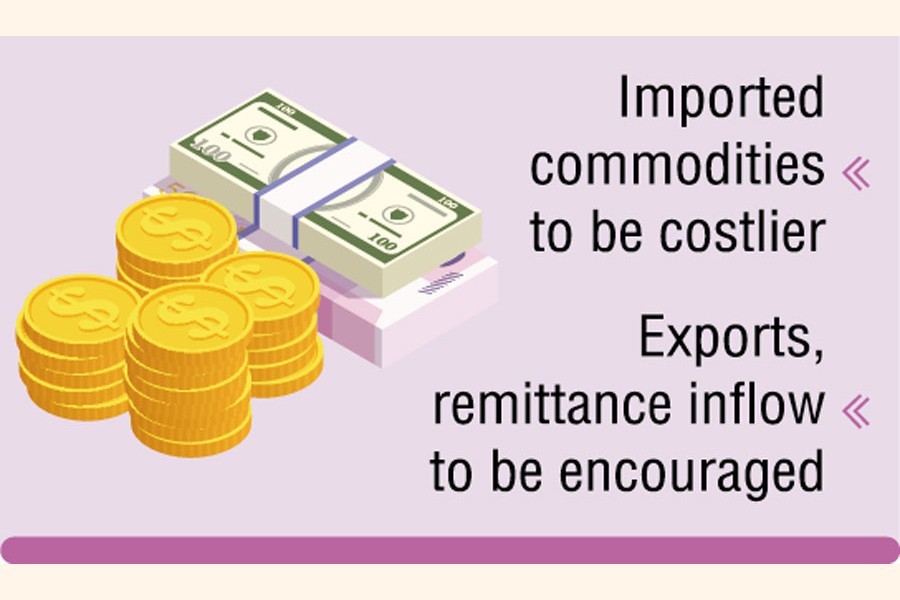Bangladesh Taka (BDT) has depreciated by Tk 1.0 against the US dollar (USD) in nearly three months despite selling of the greenback by the central bank to the banks for keeping the market stable.
The US dollar was quoted at Tk 85.80 each in the inter-bank foreign exchange market on Wednesday against Tk 84.80 on August 17 last. It was Tk 85.75 on Tuesday.
The local currency started depreciating since August 18 last amid growing demand for the US dollar in the local market, according to market operators.
The growing demand for the greenback has been created mainly due to higher import payment obligations following big purchases of textile products along with an upward trend in various commodities including fuel oil in the global market, they explained.
Economists and market operators said that the continued depreciation of the local currency against the US dollar has pushed up prices of imported items in the domestic market.
They, however, added that the exporters and remitters were being benefited from the loss of value of the local currency against the greenback.
Talking to the FE, Shah Md. Ahsan Habib, professor and director at the Bangladesh Institute of Bank Management (BIBM), said higher depreciation of the local currency against the US dollar may hit the low-income people.
"Bangladesh Bank should continue with its foreign currency liquidity support to the banks to ease the demand for the greenback in the market," Mr. Habib noted.
The gradual depreciation of the local currency will put extra pressure on the price level of imported commodities, according to a former managing director of a state-run bank.
"Such depreciation helps boost export earnings and inflow of remittance. But imports will be costlier in the near future," the banker noted.
The BDT's latest depreciation came against the backdrop of higher outflow of foreign exchange than inflow in recent months, the market operators explained.
Actually, the lower inflow of remittance and higher import bills have built up pressure on the country's forex reserves, leading to a steady devaluation of the BDT, they added.
The flow of inward remittances dropped by nearly 20 per cent to $7.05 billion during the July-October period of the current fiscal year (FY 2021-22) from $ 8.81 billion in the same period of the previous FY, the BB data showed.
Meanwhile, the actual import in terms of settlement of letters of credit (LCs) jumped by 47.18 per cent to $11.02 billion during the July-September period of FY'22 from $9.90 billion in the same period of FY'21.
However, the opening of LC, generally known as import order, rose more than 49 per cent to $ 19.90 billion during the period under review from $13.31 billion in the same period of FY'21.
The central bank has continued its foreign currency support to the banks for settling import payment obligations particularly of fuel oil, fertiliser and capital machinery.
As part of the move, the BB sold US$20 million directly to a state-owned commercial bank (SoCB) on Wednesday. In FY'22, it has so far sold $1.63 billion from the reserves directly to the commercial banks.
"We may continue providing such support in line with the market demand," a top central banker told the FE earlier.


